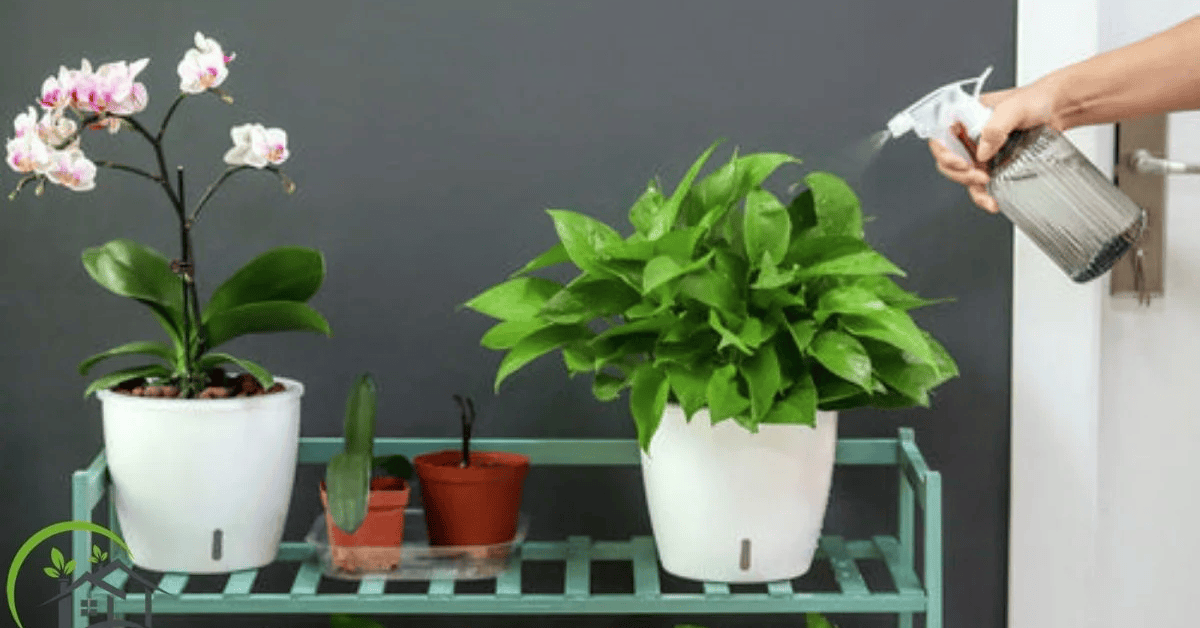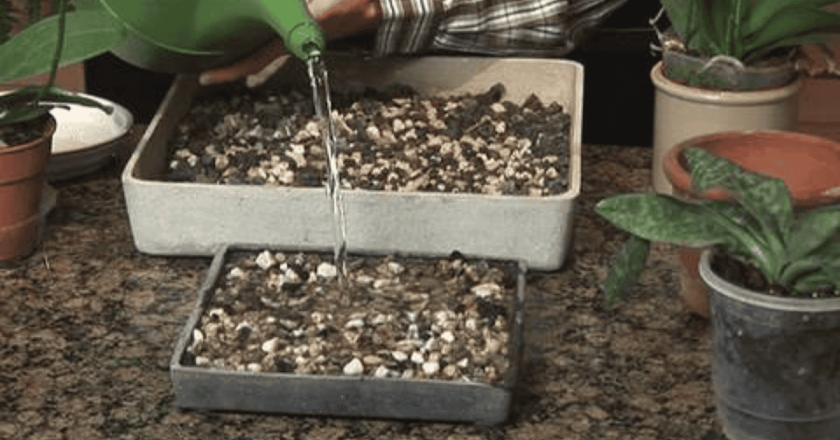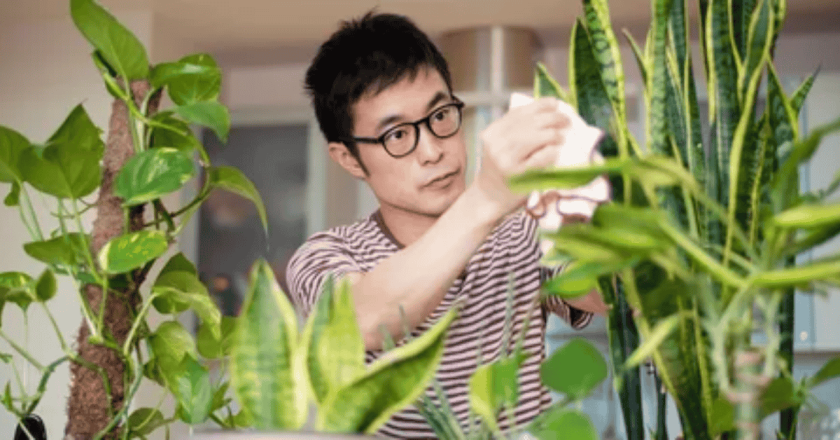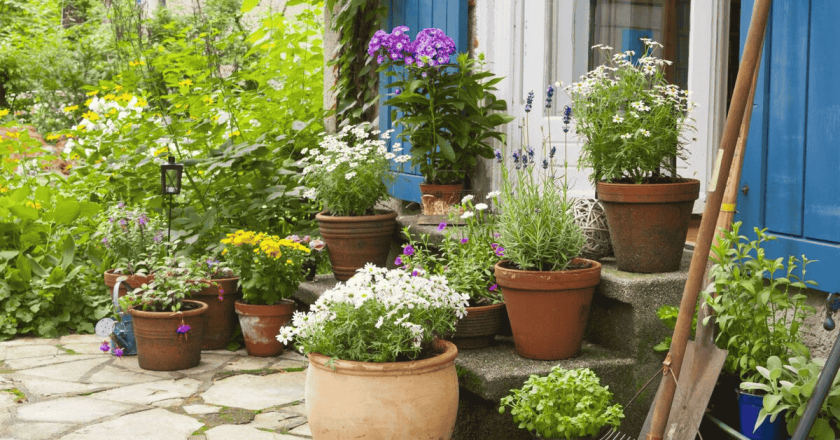When you first hear about them, it almost sounds like a dream. A pot that waters itself? A setup that keeps your plants hydrated without you hovering over them, worried about whether you’ve done too much or too little? But then the doubts creep in. Do self-watering pots really work as well as people say? Or is it just another gardening gimmick dressed up in clever marketing?
The truth, as it usually does, sits somewhere in the middle. These pots have clear advantages, but they also come with quirks. Some plants love them, while others sulk. Some gardeners swear they’re life-changing, others try once and never go back. And if I’m honest, my own experience has been… mixed, at times surprisingly so.
But before we get too personal, let’s start with the basics: how self-watering pots work, what their actual benefits are, and whether they fit into your style of gardening.
How Self-Watering Pots Work
At first glance, a self-watering container appears to be any other planter. The difference lies underneath. Instead of being a simple pot with drainage holes, it has a hidden reservoir at the bottom. A wicking system—sometimes a fabric strip, sometimes a specially designed column of soil—gradually pulls water up as the plant needs it.
Think of it as a safety net. Instead of relying on you to pour just the right amount of water every time, the system balances itself. Plants sip, in a sense, rather than gulp. And because water moves upwards, roots get what they need without sitting in a swamp.
At least, that’s the idea. In practice, the success of the self-watering system depends on its design, the type of plant, and how attentive you are to refilling the reservoir.
The Benefits of Self-Watering Pots
There’s a reason people keep turning to them, especially in busy households or for those who travel.
-
Watering efficiency – Less waste. Water is stored in the reservoir and drawn up as needed.
-
Overwatering prevention – Roots don’t drown in soggy soil; the plant controls uptake.
-
Consistent plant hydration – No rollercoaster of wet-dry extremes. This consistency can encourage steady plant growth in self-watering pots.
-
Convenience – Ideal for individuals who forget or are unable to water daily.
-
Sustainable plant care – Using less water overall makes it appealing for eco-conscious gardeners.
For some, these are game-changers. For me, they first worked wonders with basil and mint, plants that sulk dramatically when neglected.
The Pros and Cons of Self-Watering Pots
Let’s be fair: nothing is flawless. If you ask, Do self-watering pots work, the answer is yes—but not for every plant or every gardener.
Pros:
-
Time-saving for busy schedules.
-
Good for herbs, leafy greens, or plants that like consistent moisture.
-
It can be used indoors or outdoors with the right setup.
Cons:
-
Not suitable for drought-loving plants like succulents. They prefer soil that dries completely between drinks.
-
It can still develop common problems with self-watering pots: mould, algae, or mosquito larvae in the reservoir if neglected.
-
Roots sometimes grow into the water chamber, creating issues long-term.
That contradiction is what makes them polarising. They’re brilliant for some scenarios and frustrating in others.
Best Plants for Self-Watering Pots
So, which plants shine in these setups? Generally, anything that loves evenly moist soil does well.
-
Peace Lily – Known for its love of consistent hydration. (Read its full care guide.)
-
Money Tree – Though tolerant of some neglect, it thrives with steady water from a reservoir (guide here).
-
Christmas Cactus – Surprisingly adaptable, and one of the best indoor plants for experimenting with controlled watering.
-
Herbs – Basil, mint, parsley, and cilantro stay happier longer.
-
Tropical houseplants – Many on lists of low-maintenance plants that thrive love the balance these systems provide.
On the flip side, cacti, snake plants (care tips here), and succulents don’t usually do well. Their natural rhythm prefers drying periods that a self-watering planter doesn’t provide.
Indoor Self-Watering Pots
Inside the home, these pots shine. Indoor self-watering pots help avoid spills, reduce fungus gnats (when used correctly), and simplify routines. They’re particularly helpful for plants in hard-to-reach areas or offices, where watering is often forgotten.
I’ve noticed that they also provide psychological relief. There’s less guilt when life gets busy—you know the reservoir has your back.
Outdoor Self-Watering Pots
Outdoors, the story is trickier. Outdoor self-watering pots are designed to withstand rain, heat, and evaporation. On sunny patios, reservoirs may dry faster than expected. After heavy rain, they can overflow.
Still, they’re helpful for container gardening solutions, such as tomatoes, peppers, or even oversized ornamentals. Some gardeners even swear by them for balcony gardening. (If oversized greenery interests you, here are 20 bold indoor plants that sometimes adapt well outdoors too.)
Common Problems with Self-Watering Pots
While they reduce watering errors, they aren’t foolproof. Some of the common problems with self-watering pots include:
-
Fungal growth occurs if the soil stays too damp.
-
Nutrient build-up occurs as water evaporates, but minerals remain.
-
Root rot occurs in plants that are not suited to moist soil.
-
Pest attraction occurs if stagnant water sits in the reservoir too long.
The fix is usually simple: clean regularly, flush soil occasionally, and match the right plant to the right pot.
Self-Watering Gardening as a Lifestyle
Beyond the pots themselves, some gardeners embrace self-watering gardening as a philosophy—creating systems that minimise maintenance. Wicking beds, hydroponics, and large outdoor reservoirs are all variations on the same principle.
This approach suits individuals seeking low-maintenance plant care. It doesn’t mean neglect, though—it means designing smart systems so your plants thrive with less micro-management.
Container Gardening Solutions for Modern Homes
As urban spaces shrink, container gardening solutions become more creative. Rooftop gardens, balcony jungles, and indoor plant shelves—all benefit from technologies that simplify care. Self-watering containers fit perfectly here, saving time and conserving water.
If you’re new to plants, they can build confidence. You’ll see consistent growth without the guesswork of daily watering. And once you’ve gained confidence, you might expand into more hands-on care.
Sustainable Plant Care
Another angle: water conservation. Self-watering planters use less water than traditional methods. They direct it exactly where roots need it, reducing runoff. This makes them attractive for eco-conscious gardeners pursuing sustainable plant care.
They align with broader efforts to reduce waste in gardening—less frequent watering means less energy and fewer resources.
Plant Growth in Self-Watering Pots
Do plants truly grow better in these setups? The answer depends. Many studies suggest plant growth in self-watering pots is stronger for water-loving species because hydration is consistent. Herbs often grow lusher, flowers bloom longer.
But some plants stagnate. Succulents or Mediterranean species often suffer from stress, producing weak growth or even dying. This circles us back to the core question: do self-watering pots work? Yes, for some plants. Not for all.
🌿 Key Takeaways
-
Self-Watering pots use built-in reservoirs and wicking systems to deliver steady moisture directly to plant roots.
-
They offer significant benefits of self-watering pots, including improved watering efficiency, consistent hydration, and reduced risk of overwatering.
-
These pots are best for herbs, leafy greens, Peace Lilies, and tropicals but not ideal for succulents or cacti.
-
The pros and cons of self-watering pots depend on your plant type and maintenance—cleaning and monitoring are still necessary.
-
For busy individuals, they provide a straightforward approach to low-maintenance plant care, while promoting sustainable and water-efficient gardening practices.
🌱 Final Thoughts
So, do Self-Watering pots really work? Yes—but with caveats. They shine for plants that love consistent moisture and for gardeners who want convenience without compromising on growth. They aren’t universal solutions; drought-loving species often fare poorly. Think of them less as a magic trick and more as a useful tool in your plant care toolkit. When paired with the right species and a little maintenance, these containers can save time, conserve water, and keep your greenery thriving, even when life gets busy.
❓ FAQs
Q1. Do self-watering pots work for all plants?
No. They’re perfect for tropicals, herbs, and foliage plants, but succulents and cacti usually struggle in them.
Q2. What are the main benefits of self-watering pots?
They ensure consistent hydration, prevent overwatering, reduce daily maintenance, and improve watering efficiency.
Q3. How often should I refill the reservoir?
It depends on the plant and season. Indoors, usually every 1–2 weeks; outdoors, sometimes more often during heat.
Q4. Can self-watering pots cause root rot?
If used properly, they reduce the risk. But if the reservoir is neglected and stays stagnant, it can still create problems.
Q5. Are self-watering pots eco-friendly?
Yes. They conserve water, reduce waste, and align with sustainable plant care practices.




